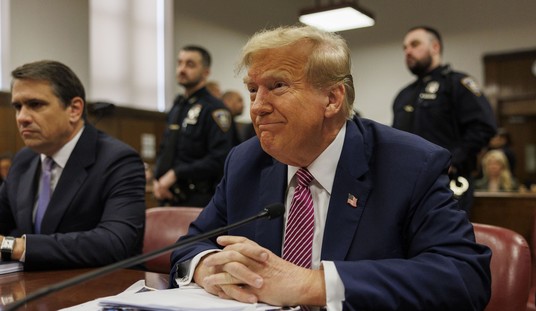The NYT’s Lede describes the fiasco which the “Cash for Clunkers” program has become. The Lede’s story focuses mostly on the program participant’s difficulties in obtaining a reimbursement from the government. What the article doesn’t discuss is the wisdom of scrappage programs themselves. The scrappage program essentially takes a perfectly good machine and destroys it in the name of an environmental benefit.
The program requires that the clunkers be put out of service for good, so dealers must destroy the engines on cars that are traded in. We watched this process yesterday at the DCH Paramus Honda in Paramus, N.J. It is quite laborious and potentially dangerous. And it certainly is final.
Nick Clites, who is in charge of used cars for the dealership, was prepping a 1988 BMW 535IS, with 214,000 miles on the odometer, for its death. He drained the oil, then donned a silky blue protective suit, goggles and gloves and poured a sodium silicate solution into the engine. He revved the car, and within a few seconds, the solution hardened into a glass-like substance, the engine seized up and the car was dead.
So here is one question: With the program now on shaky ground, even with a new infusion of money, what consumer and what dealer will risk rendering an engine irretrievably unusable?
Without an environmental justification, why would it not be better to simply send or sell the 1988 BMW 535IS to Africa, where it might be used as a sedan, or converted into a delivery vehicle, instead of destroying it? Come to that, why not sell it as a used car to an American who can’t afford a new one?
The objective of a scrappage program is that: “of stimulating the automobile industry and removing inefficient, high emissions vehicles from the road. Many European countries have introduced large-scale scrappage programs as an economic stimulus to increase market demand in the industrial sector during the global recession.” While the “clunker” exists it implicitly competes with the newer models, in price at least. Destroying an older car removes the unit from the market while removing a source of ‘pollution’ from the books of the environmentalists.
The fact that the clunker must be physically removed from the market proves it still has some economic value. Why should something which still retains a value, even in America, be destroyed? The Specialty Equipment Marketer’s Association posed this very question when it wrote President Obama opposing the program. It argued that destroying the vehicles would hurt small businesses and the car business; it would penalize people who couldn’t afford a new car in any case, cash voucher notwithstanding. “Vehicles are frequently recycled down the economic chain as they age. Scrappage programs will disrupt the supply of used cars, raising prices further on the very vehicles most often purchased by low-income citizens.”
But even if one cared nothing for lower-income people or citizens of the Third World who would be glad to have a chance of owning a used car, one objection which environmentalists are obliged to take more seriously is that a scrappage program may artificially accelerates the car life cycle and does not take into account the “carbon footprint” of disposing of the dead cars. In which case the “cash for clunkers” scheme is not only destroying objects of economic value, it is actually polluting the environment. The Lede described the unease in the car industry.
“Oh my God, what a mess today,” Sally Ann Maggio, who co-owns Hackensack Auto Wreckers, also in New Jersey, said on Friday. We visited her car-crushing business on Thursday. She didn’t think much of the program to begin with.
Ms. Maggio said she generally makes her profit by reselling the engines, the most valuable parts of the cars she takes, but that’s not posible with the cars coming to her because of the cash for clunkers program, because they have been rendered unusable. That cuts down the salvage value of the cars — and the incentive for salvage yards and wreckers to take them — to almost nothing, considering the time and energy they must spend in going to the dealer, towing back the dead cars, removing the engines, crushing the bodies and shipping them to a metal scrap shredder and recycler.
And, of course, the process reduces the supply of used engines for people who can’t afford to buy a new car and come to the salvage yard looking to fix up old ones. In any case, Ms. Maggio said, dealers are “hitting the panic button” today.
One final problem is fiscal. A steady supply of tax dollars is required for government to keep distorting the market. On August 1st the White House announced it was “reviewing” the program.
Transportation Department officials called lawmakers’ offices earlier Thursday to alert them of plans to suspend the program as early as Friday. But a White House official said later the program had not been suspended and officials there were assessing their options.
“We are working tonight to assess the situation facing what is obviously an incredibly popular program,” White House press secretary Robert Gibbs said of the Car Allowance Rebate System. “Auto dealers and consumers should have confidence that all valid CARS transactions that have taken place to date will be honored.”
Gibbs said the administration was “evaluating all options” to keep the program funded. …
A survey of 2,000 dealers by the National Automobile Dealers Association found about 25,000 deals had not yet been approved by NHTSA, or nearly 13 trades per store. It raised concerns that with about 23,000 dealers taking part in the program, auto dealers may already have surpassed the 250,000 vehicle sales funded by the $1 billion program.
“There’s a significant backlog of ‘cash for clunkers’ deals that make us question how much funding is still available in the program,” said Bailey Wood, a spokesman for the dealers association.
Where’s the funding going to come from? But that’s another question.









Join the conversation as a VIP Member